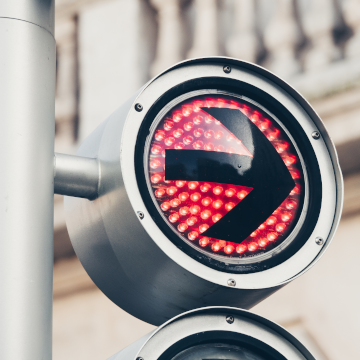🎯 Introduction: The Eternal Tug-of-War
Every investor, from cautious retirees to aggressive hedge funds, is caught in the same game: chasing returns while dodging risk. Get it right, and you grow wealth steadily. Get it wrong, and you’re underwater before you can blink. This balancing act is what portfolio theory is built on – and now, artificial intelligence is stepping in to tilt the odds.
AI is no longer just predicting stock moves or crunching numbers for analysts – it’s actively reshaping how portfolios are managed, optimized, and adjusted in real-time. This post explores how AI is revolutionizing portfolio risk-reward strategies and what that means for the future of investing.
📈 What Does It Mean to Balance Risk and Reward?
Balancing risk and reward is the process of maximizing returns while minimizing the chance of catastrophic loss. It’s at the heart of every investment strategy.
Traditional tools for this include:
- Diversification
- Modern Portfolio Theory (MPT)
- Efficient frontier analysis
- Value at Risk (VaR)
- Sharpe and Sortino ratios
But while these tools are useful, they’re built on static assumptions and historical data – they don’t adapt in real-time or account for non-linear market behavior. That’s where AI fills the gap.
🤖 How AI Changes the Game
Artificial Intelligence – specifically machine learning (ML) and deep learning – can detect subtle patterns, react faster than humans, and continuously learn from new data.
AI-powered portfolio management involves:
- Predictive modeling of asset behavior
- Dynamic allocation based on market conditions
- Risk clustering and scenario simulation
- Real-time rebalancing
AI doesn’t just make decisions faster. It makes data-informed, probability-weighted decisions based on variables that traditional models often overlook – like news sentiment, alternative data, or social media signals. Want AI-Driven Options Alerts? Give Options Pop a try.
🧩 Core Areas Where AI Balances Risk and Reward
Let’s break down the key ways AI is actually used in live portfolios to keep risk and reward in sync.
📊 1. Predictive Asset Modeling
AI models can forecast asset returns by analyzing historical patterns, volatility, macroeconomic data, and even supply chain disruptions.
Benefits:
- More accurate return expectations
- Better assessment of downside risk
- Improved risk-adjusted return predictions
Example:
An AI system predicts that tech stocks will underperform for the next quarter based on a combination of earnings sentiment, Twitter data, and global macro indicators – prompting the portfolio to reduce exposure early.
⚖️ 2. Risk Assessment & Clustering
AI can classify assets based on their actual behavioral risk, not just their sector or asset class label. This reveals hidden correlations and concentration risks.
Techniques used:
- Principal Component Analysis (PCA)
- K-Means clustering
- Decision trees
- Autoencoders for anomaly detection
Real-world value:
Instead of relying on a basic diversification model (like “own a bit of everything”), AI can show you which assets are actually diversifying your portfolio – and which ones are just moving in disguise.
🔁 3. Dynamic Asset Allocation
Rather than rebalancing on a fixed schedule (monthly, quarterly), AI models can detect shifts in market regimes and reallocate accordingly.
Benefits:
- Greater responsiveness to volatility spikes or market shocks
- Reduced exposure to underperforming sectors
- Smart, timely rotation between asset classes
Example:
An AI detects an incoming volatility surge in emerging markets and reduces exposure to EM ETFs while increasing cash or hedge assets like gold.
Forex Gold Investor targets predictable price movements in gold using automated trading strategies backed by years of performance data.
🧠 4. Reinforcement Learning for Strategy Tuning
Reinforcement learning (RL) is a subset of AI where the system “learns by doing.” In portfolio management, this means testing thousands of allocation strategies in simulated environments to maximize long-term return under different risk constraints.
Why this matters:
- It accounts for compounding effects, drawdowns, and momentum
- The system self-corrects in response to market behavior
Think of it as a digital portfolio manager that keeps evolving – without the ego or lunch breaks.
📉 5. Drawdown & Tail-Risk Mitigation
AI models can monitor drawdowns in real-time and adjust exposure to prevent cascading losses.
Use cases:
- Dynamic hedging using options
- Raising stop-loss thresholds when market sentiment turns negative
- Liquidity monitoring to avoid getting trapped in illiquid assets
Some AI-driven platforms can even simulate 10,000+ stress-test scenarios daily, identifying how a portfolio would perform under crises like 2008, 2020, or hypothetical geopolitical shocks.
🧰 Tools & Platforms Leveraging AI for Portfolio Optimization
Here are a few real-world platforms already putting this into action:
✅ BlackRock’s Aladdin
- Institutional-grade AI platform
- Handles portfolio risk analytics, optimization, and compliance
- Used by over 200 financial institutions
✅ Betterment & Wealthfront
- Robo-advisors that use machine learning to optimize retail portfolios
- Dynamic tax-loss harvesting and automated rebalancing
✅ QuantConnect
- Open-source backtesting & AI strategy development environment
- Used by quants and algo traders to develop AI-enhanced portfolio strategies
✅ Kavout
- AI engine that scores stocks and ETFs based on predictive models
- Used for smart portfolio construction and ranking
📚 Case Study: AI Balancing Risk in a Real Portfolio
Imagine a diversified portfolio of 40% U.S. equities, 20% international stocks, 30% bonds, and 10% gold. In a standard model, rebalancing would occur quarterly, regardless of market conditions.
But an AI-augmented strategy might:
- Reduce equity exposure when volatility indicators spike
- Identify sector rotations and shift from growth to value
- Increase bond duration if recession signals rise
- Rotate into alternatives (e.g. commodities, REITs) when inflation ticks up
The result? More responsive, resilient performance – and better downside protection without sacrificing long-term returns.
📏 Key Metrics AI Helps Optimize
When using AI, you’re not just guessing. You’re optimizing around real, quantifiable metrics:
- Sharpe Ratio: Return per unit of risk
- Sortino Ratio: Return per unit of downside risk
- Max Drawdown: Worst peak-to-trough loss
- Volatility Clustering: Detection of unpredictable market risk spikes
- Conditional VaR (CVaR): Expected tail-end loss
AI constantly evaluates these numbers, adjusting allocations to find the sweet spot between growth and safety.
Looking for Verified Forex Signals? Check out 1000pip Builder.
🔐 Risks & Considerations
Let’s not pretend AI is a silver bullet. There are real concerns:
1. Overfitting
AI can get too smart for its own good and “learn” patterns that don’t hold up in real-world data.
2. Black Box Models
Some deep learning models are hard to explain – not great when regulators or clients want transparency.
3. Garbage In, Garbage Out
Poor data leads to poor models. Always verify data quality before trusting AI with portfolio decisions.
4. Model Drift
Markets evolve. What worked last year may not work now. AI models must be retrained and validated regularly.
🧠 Best Practices for Using AI in Risk-Reward Balancing
- ✅ Use AI as a co-pilot, not an autopilot
- ✅ Regularly backtest with out-of-sample data
- ✅ Set clear risk parameters and constraints
- ✅ Log and review all decisions made by the model
- ✅ Keep a human analyst in the loop
The best strategies combine machine precision with human judgment.
🔮 The Future: Where AI is Taking Portfolio Management
We’re entering an era where:
- AI systems run real-time sentiment analysis across global news sources to inform reallocation
- Personalized portfolios are built instantly based on individual risk profiles and market conditions
- AI copilots sit inside broker platforms, suggesting when to take profits, reduce exposure, or rebalance
- Portfolios evolve day by day, not month by month
As computing power, data access, and model accuracy continue to improve, the distinction between “quant fund” and “AI-powered personal portfolio” will disappear.
✅ Conclusion: A Smarter Way to Grow Wealth
Balancing risk and reward is the holy grail of investing – and AI is becoming one of the most effective tools to do it. Whether you’re a DIY investor or managing millions in assets, AI can help you make more informed, timely, and adaptive portfolio decisions.
But as with any tool, it’s all about how you use it. The traders and investors who learn to work with AI – not blindly trust it – will be the ones who consistently stay ahead of the curve.







Leave a Reply